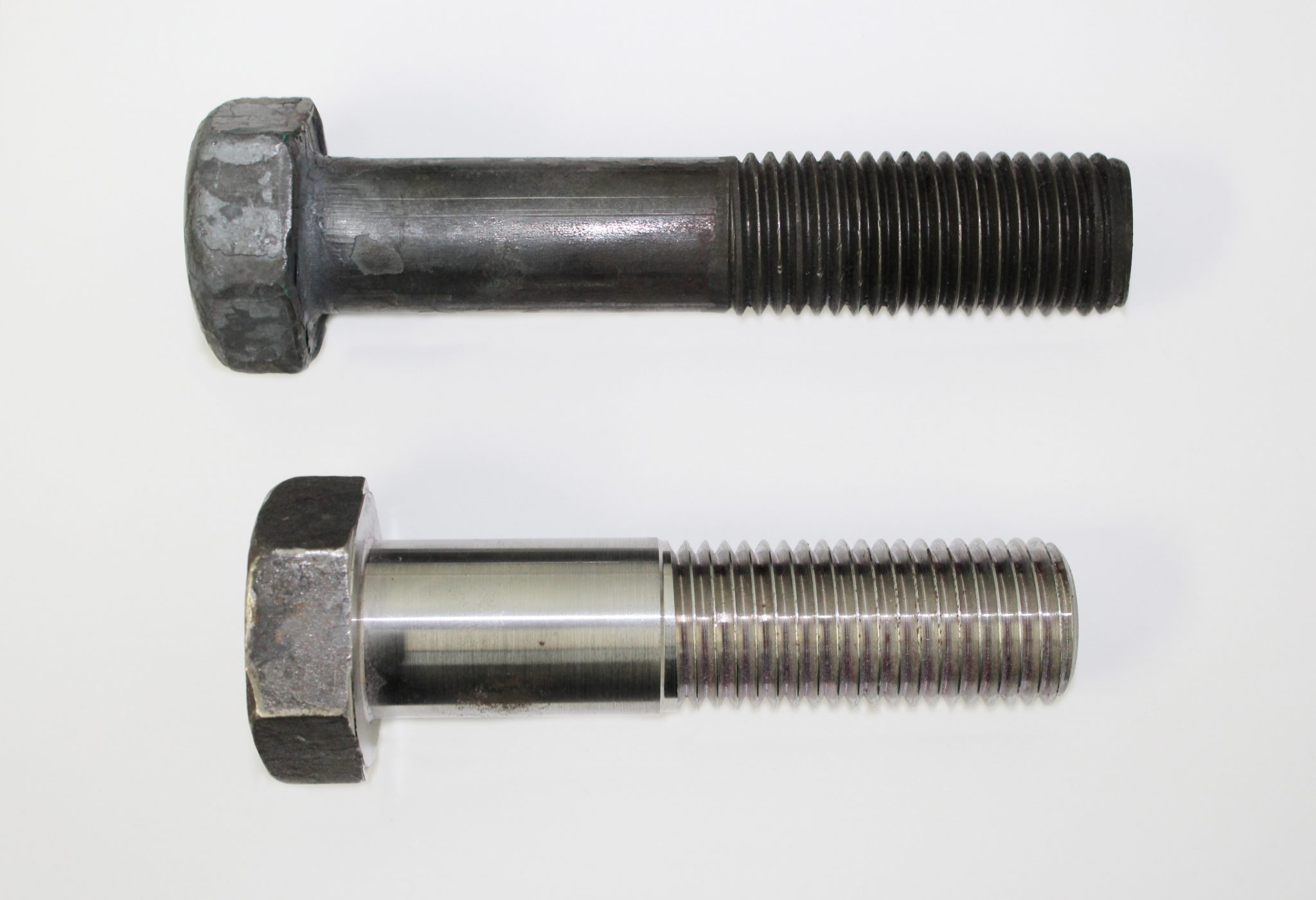
Rolled Thread vs. Cut Thread
There are two types of threads on mechanical fasteners: rolled thread and cut thread. Sometimes our customers ask about the threading process – particularly which type of bolt threading is stronger. Though both processes yield similar results, there are a few differences in each process that cause differences in the products. Before we get into strength of the products, let’s go over the differences between rolled thread and cut thread bolts.
Rolled Thread Bolts
The process of roll threading a bolt is a cold forming process using a set of hardened steel dies to form threads onto a bolt. The die protrudes into the outside diameter of the blank bolt to form threads onto the bolt. As the bolt is under high pressure, the steel grain flows in multiple directions, causing the bolt to be stronger, as it does not disturb the structural integrity of the steel. Rolled thread bolts are also smoother in installation and more resistant to damage due to them being hardened and compressed.
Cut Thread Bolts
Cut threading bolts involves severing the steel’s grain structure to produce threads. While rolled thread bolts offer some advantage over cut thread bolts in regards to strength and cost, cut threads can be manufactured to virtually all specifications, including larger diameter bolts. Birmingham Fastener has the capacity for thread cutting up to 4 inches in diameter.
Strength of Rolled and Cut Threads
In the past, our customers have asked whether rolled thread bolts are weaker products due to their smaller bar diameter. A threaded bar breaks at its weakest point, which is in the root of the thread, and because the thread root diameter is smaller than the bar stock on cut or rolled thread products, the bar diameter is not relevant when considering tensile strength. What is relevant is the work that has been performed in the weakest point on the threaded product. For a cut thread bolt, no work has been done on the material. Metal removal is used to form the thread. For a rolled thread bolt, the threaded section is formed by metal movement during the cold forming process. This process is what makes the rolled threads stronger during a tensile test. However, it is important to note that heat treated cut thread fasteners, such as our 1-1/2” A325 bolts, will perform at the same level as any rolled thread bolt, because the heat treatment will determine the strength of the bolt as opposed to the method of forming them.
***
Call or contact us for a quote today to learn how Birmingham Fastener can provide you with quality fasteners with a quick turnaround!